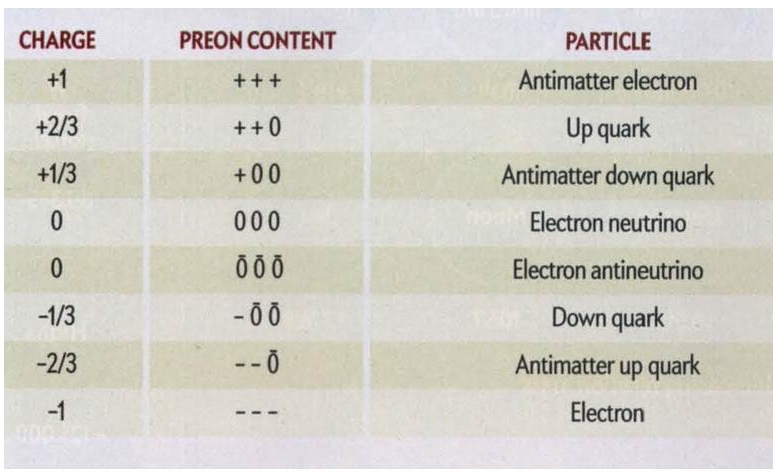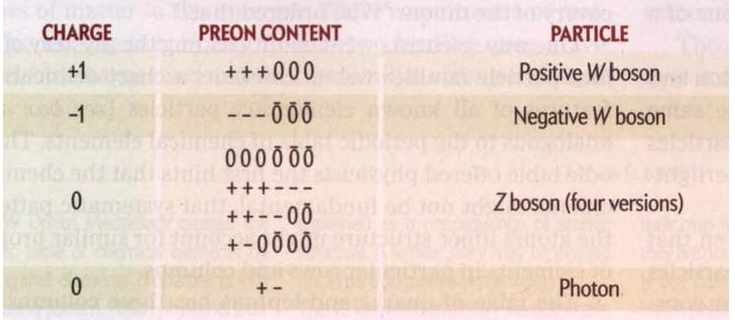How exciting. Don Lincoln, an author and senior physicist at Femilab, who also does research at CERN, and who makes interesting video tutorials on particle physics for the public, has published an article on preons in the November issue of Scientific American.
I am happy to be back, after a six-month hiatus, but certainly never expected to be greeted with such good news. For some reason, I didn’t know about Lincoln, or that anyone other than Sundance Bilson-Thompson took preons seriously.
The Scientific American article is entitled “The Inner Life of Quarks,” which is only available online with subscription, but you can read it under another title here.
My first impulse was to contact Mr. Lincoln and see if he could be enticed enough by the success of our own preon model to investigate the Universe of Motion, but alas I’m afraid I’m too late as he is about to achieve escape velocity on his way to star status with his Scientific American article and a possible TED lecture next year (see here.) Now he will undoubtedly be swamped with so much attention and email that he will be virtually unreachable.
Already, people like Lubos Motl and Peter Woit have weighed in to explain why preons can’t exist, and I doubt that Sean Carroll could be far behind. However, as always we must remember that new wine requires new bottles.
Our new bottle is not going to break under the pressure of arguments such as those pressed by Motl and Woit, because it’s a new system of theory that doesn’t posit that matter exists in space-time, but rather that matter consists of space and time. They argue that quarks and leptons are already “point-like,” whatever that means, thus excluding anything smaller. I wrote previously about some of the difficulties with that line of thinking here.
The trouble with physicists looking for smaller particles to fit inside their “point-like” particles are many, but our preons are not particles and our particles are not “point-like.” Our preons are S|T units, consisting of combinations of SUDRs and TUDRs, which are unit 3D oscillations of space and time respectively.
The LRC’s preons are not massive, but their combinations as quarks and leptons are massive. Yet, this is not a matter of cancellations of mass and energy contributions, in effect masking massive preons, but rather a matter of mass emerging from geometric configuration: The S|T units are massless (i.e. they propagate at c-speed relative to matter,) until they form quarks and leptons, which prevents them from propagating relative to matter. In other words, they become “massive” precisely because they can no longer propagate at c-speed, when they combine, for geometric reasons.
That’s not to say we don’t have major theoretical challenges with our theory. We do, but they are entirely different problems than those presented by the legacy system of theory (LST). And who knows, now that the preon theory is on the table in a more prominent fashion, maybe we will attract more interest in the Reciprocal System of Physical Theory (RST).
That would seemed deserved from the fact alone that our preon sub-structure of quarks and leptons turns out to be so similar to that described in Lincoln’s article. Notice the table of the 1979 preon model of Harari and Shupe that Lincoln illustrates in his article:
 Table 1. The Harari and Shupe 1979 Preon Model of Quarks and Leptons
Table 1. The Harari and Shupe 1979 Preon Model of Quarks and Leptons
According to Lincoln, Harari and Shupe came up with the same model independently. This is amazing in itself, but then we came up with the same model just from developing the consequences of the RST. To be sure, our clue came from Sundance, and he undoubtedly knew of Harari and Shupe’s work, but we didn’t and the natural fit was readily accepted to advance the development of our RST-based theory, not to discover an underlying order to unify superficially different particles of matter, in an LST-based theory.
We were not positing the existence of +/- 1/3 and +/- 2/3 LST electric charges, with no theoretical definition of them. We were just exploring the combinations of well-defined unit space and unit time speed displacements, two simple building blocks that are logical consequences of the RST, and they ended up forming the same pattern as the successful preon pattern that LST physicists have devised.
The difference between the LRC preon model and the H&S model is, again, the difference between space and time speed displacements and fractional electrical charges. Our preon model defines the negative charge of the electron in terms of more space speed-displacement than time speed-displacement, and the positive charge of the positron in terms of more time speed-displacement than space speed-displacement.

Table 2. The Harari and Shupe 1979 Preon Model of Bosons
We only have one version of the Z boson and the +/- W bosons are different in that they consist of unbalanced S|T units in the parallel configuration. This highlights the difference between the LST entity of 0 charge and (0) anti-charge, and the RST entity of balanced speed-displacement (-)<—->(+) and its inverse (+)<—->(-).
For example, our -W boson is configured as three net negative combinations,
(- -)<—->(+)
(+)<—->(- -)
(- -)<—->(+)
and our +W boson is configured as three net positive combinations,
(-)<—->(++)
(++)<—->(-)
(-)<—->(++)
which makes the Z boson configuration three balanced combinations of three SUDRs and three TUDRs each, or the combination of the -W and +W bosons,
(- - -)<—->(+++)
(+++)<—->(- - -)
(- - -)<—->(+++)
That this leads to a correct understanding of beta decay, not to mention things such as quantum spin and quantum gravity, is just one more indication that the RST-based theory, and its preon model is able to seriously play with the big guys.
When do we get an article in Scientific American?